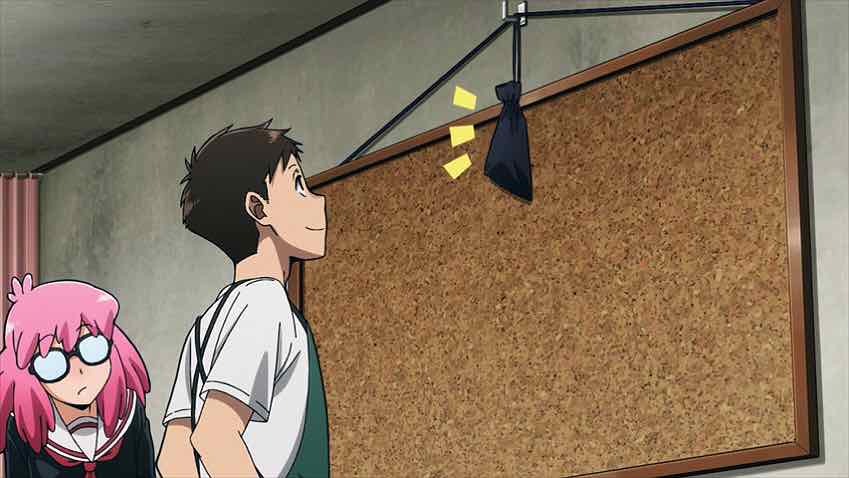In a strange way, it’s often easier to write about mediocre or flawed episodes of an anime than it is about really good ones. Flaws are easy to pick apart, but when it’s all good – sometimes that’s all you have to say. My blog about this week’s Bakuman could be a very short one – “Absolutely fantastic”.
I wouldn’t have changed a second of that. I liked all of it, starting with the format. I loved how the episode rolled out the six week “Golden Future Cup” events. It brought a real sense of excitement to events, really making the audience feel the tension the characters were going though. I liked the way Eiji was used to bridge all the sequences together. It was good to see Masahiro’s family, too – they were part of some great scenes in the early eps but have largely disappeared lately.
I also loved the way each manga was presented – not the first time, certainly, that this show has used the “animated manga” format, but it was really put to good use here. It was clear to see the care that went into each of the fictionalized mangas, and they all genuinely came off as interesting projects. The genome of each project could be traced pretty clearly, too – what real manga influenced each. And what of those four stories?
First off, Fukuda’s manga looked like a pretty straightforward shounen effort, as befits his personality. I was reminded a bit of Beelzebub – very traditional HS action, some blood, and goofball humor. And the art style matched – very direct and literal, with just enough style to be interesting.
Next we had Ashirogi Muto, and while we’ve seen “Shady Detective Trap” before, it definitely looked different. Masahiro’s drawings are shounen, but they’re pretty – they have an elegance and grace to them that sets them apart from Fukuda’s. The story seems going for the sophisticated, wry side of the shounen universe – again, as befits the authors. If these two were going to succeed at shounen it was going to be highbrow shounen.
Then we had Aoki and Nakai’s manga, “Hideout Door”. This was the surprise of the four for me, and frankly, the one I would have most wanted to read. Nakai’s art is indeed pretty spectacular – it’s easy to see that the technique and detail exceeds the others. Stippling every frame is one thing, but I love his character designs too. This whole story had the feeling of a shounen/shoujo fusion – which indeed it was – which is a pretty rare thing.
Last was Koogy, with his “Colorfusical”. While pretty much everyone on screen dissed it and they didn’t even really try to explain the plot to us, I confess I was intrigued by the art style – very much a psychedelic, San Francisco/1960’s look. It’s something you’d expect to see on a Stanley Mouse or Peter Max poster and not in a manga, but it was striking. I don’t know if I’d want to look at it for thirty pages, admittedly.
 We’re getting close to the end of season one, which means cliffhanger. I do think we’ll find out who wins the Futures Cup, and the early returns seem to indicate that all three protagonists’ mangas did very well (Koogy’s being the great mystery). It’s hard to root against Nakai for a couple of reasons – not just because he and Aoki’s manga fascinates me, but because he’s clearly a great talent who has suffered and labored for a lot longer than the others. I do expect Masahiro and Takagi to win this, but in the end there’s no reason only one of these stories can get serialized – if they’re good enough, why not two or more? If they were to serialize “Hideout Door” I’d definitely read it…
We’re getting close to the end of season one, which means cliffhanger. I do think we’ll find out who wins the Futures Cup, and the early returns seem to indicate that all three protagonists’ mangas did very well (Koogy’s being the great mystery). It’s hard to root against Nakai for a couple of reasons – not just because he and Aoki’s manga fascinates me, but because he’s clearly a great talent who has suffered and labored for a lot longer than the others. I do expect Masahiro and Takagi to win this, but in the end there’s no reason only one of these stories can get serialized – if they’re good enough, why not two or more? If they were to serialize “Hideout Door” I’d definitely read it…






